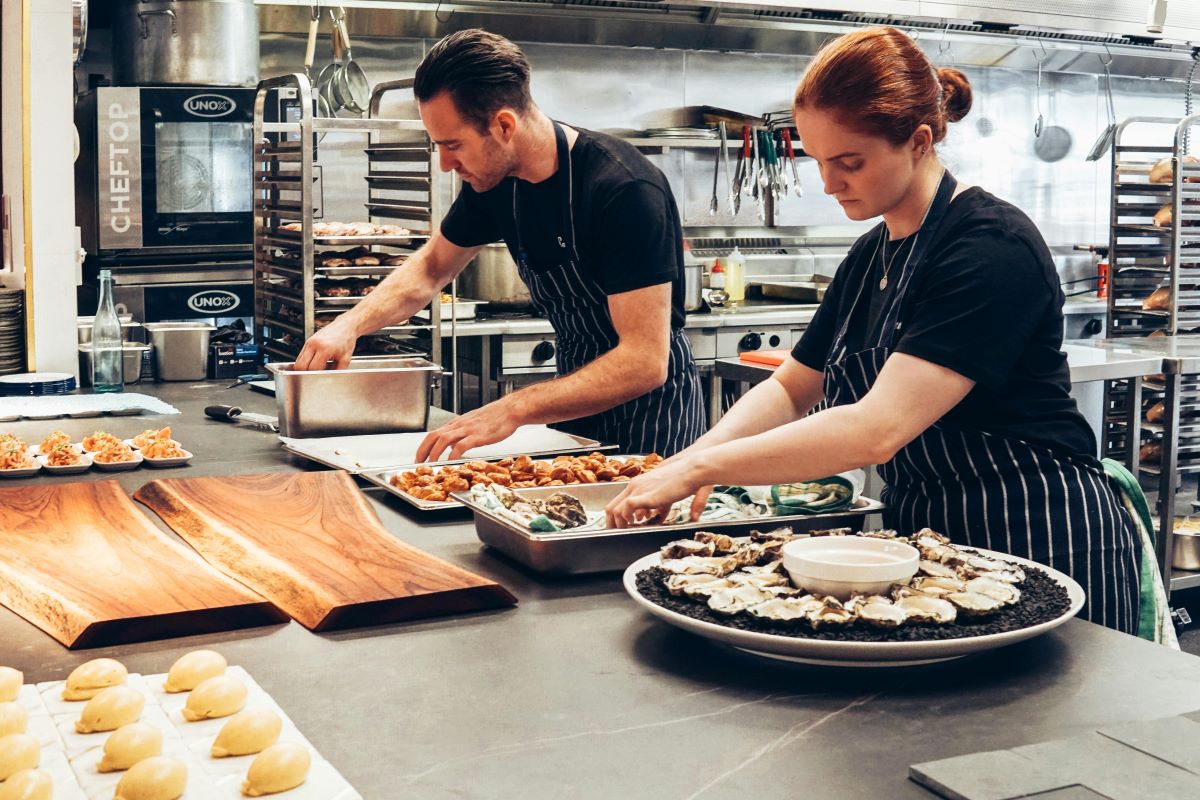Summer is here, and while many of us are looking forward to dining out, restaurants are struggling with a major issue: a severe staff shortage. Here’s a look at what’s causing this crisis and how it’s affecting the industry.
Pandemic Fallout

The COVID-19 pandemic caused many restaurant workers to leave the industry. With the lockdowns and uncertainty, many found jobs elsewhere and are reluctant to return.
Low Wages, High Stakes

Many former restaurant workers cite low wages as a key reason they aren’t returning. Despite the increasing cost of living, restaurant wages have remained stagnant, making other industries more appealing.
Stressful Conditions

The stressful, fast-paced environment of restaurants can be a turnoff. Long hours, demanding customers, and the physical toll make other job sectors more attractive.
Health Concerns

The ongoing pandemic still poses health risks, particularly in close-contact environments like restaurants. Workers concerned about their health and safety are opting for jobs with less exposure risk.
Lack of Benefits

Many restaurant jobs lack essential benefits like health insurance, paid sick leave, and retirement plans. This lack of security is a significant deterrent for potential employees.
Burnout is Real

Restaurant work is notoriously high-stress. The combination of demanding physical labor and customer service leads to burnout, prompting many to seek less stressful employment.
Childcare Chaos

With schools and daycares facing intermittent closures, many workers with children find it challenging to manage their schedules around unpredictable childcare needs.
Remote Work Revolution

The pandemic normalized remote work for many sectors. Former restaurant employees are finding remote jobs that offer flexibility and a better work-life balance.
Unemployment Benefits Boost

Enhanced unemployment benefits during the pandemic provided a financial cushion, allowing many workers to be more selective about returning to work.
Career Reevaluation

The pandemic prompted a reevaluation of career goals for many individuals. Some used this time to pursue education or training in entirely different fields.
Immigration Woes

Stricter immigration policies have reduced the pool of available workers, as many restaurants relied on immigrant labor to fill positions.
Seasonal Staff Shortage

The summer season typically sees an influx of temporary workers, such as students. However, travel restrictions and visa delays have reduced the availability of seasonal staff.
Competition from Other Sectors

Industries like retail and warehousing, which have seen a surge in demand, are offering higher wages and better working conditions. They’re drawing potential employees away from the restaurant sector.
Customer Demand Surge

With the easing of restrictions, customer demand has surged, putting additional pressure on the already limited staff and exacerbating the shortage.
Unionization Efforts

Some restaurant workers are pushing for unionization to secure better wages and working conditions.
Training and Development

Investing in training and development programs can help restaurants attract and retain young workers. Providing opportunities for career growth and skill development can make waitressing jobs more appealing.
Flexible Scheduling

Offering flexible scheduling options can help accommodate the needs of young workers, particularly those who are balancing work with education or other commitments.
Improving Working Conditions

Addressing issues such as customer abuse, stress, and health risks can improve the appeal of waitressing jobs. Creating a supportive and safe work environment is essential for attracting young talent.
Employee Recognition

Recognizing and rewarding the hard work of waitstaff can boost morale and job satisfaction. Implementing employee recognition programs can help retain young workers.
Community Engagement

Engaging with the local community and building a positive reputation can attract young workers who value social responsibility and community involvement.
Technological Integration

Embracing technology to streamline operations and reduce the burden on waitstaff can make waitressing jobs more manageable and attractive.
Long-Term Solutions

Addressing the root causes of the labor shortage in the hospitality industry will require a multifaceted approach. Improving wages, benefits, and working conditions, as well as changing societal perceptions of waitressing, are essential steps.
Future Outlook

The hospitality industry must adapt to the changing expectations of the workforce to remain competitive. By addressing the concerns of young workers and creating a more appealing work environment, restaurants can attract and retain the talent they need to thrive.
20 Foods You Should Never Put on Your Plate

Listen up—these foods might seem harmless, but they’re secretly sabotaging your health. They look innocent in your kitchen, but trust me, they’re trouble. Here’s a quick rundown of 20 foods that aren’t as friendly as they seem. Consider this your heads-up! 20 Foods You Should Never Put on Your Plate
Taco Bell’s Biggest Value Meal Ever Hits the Market

America’s most popular Mexican-American fast food chain has joined the so-called “fast food wars,” offering new meal deals to bring customers through their doors. Taco Bell’s Biggest Value Meal Ever Hits the Market
Cut These 20 Ultra-Processed Foods from Your Diet

American supermarket shelves may dazzle with convenience and flavor, but beneath the flashy packaging lurks a world of ultra-processed foods. Can you decipher labels to make healthier choices for your well-being? Cut These 20 Ultra-Processed Foods from Your Diet
Featured Image Credit: Pexels / Elle Hughes.
The content of this article is for informational purposes only and does not constitute or replace professional advice.
The images used are for illustrative purposes only and may not represent the actual people or places mentioned in the article.
For transparency, this content was partly developed with AI assistance and carefully curated by an experienced editor to be informative and ensure accuracy.

